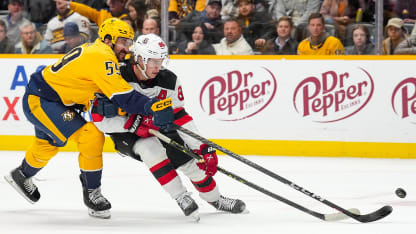The first quarter of the season is almost all the way in the books. This is significant for many reasons.
At this point everybody starts to hunt to get to another level with their play and in the standings. This is the time when the schedule picks up and most teams from here on out will be playing on average 13-to-15 games a month. Teams are pushing to become more consistent and more committed on a nightly basis.
By now every team in the League should know what its identity is, what makes it successful. By now coaches have a realistic assessment of the talent on the roster and the areas that need to improve. They also know the challenges that have presented themselves in the first quarter and are working toward how to overcome them.
The job of the coaching staff is to create plans to effectively deal with setbacks and adversity. Every team has had some already, so those plans should be in place and be acted on.
There is, however, so much more than just putting plans in motion, development and addressing problem areas that have arisen in the first quarter, pushing for better in the second quarter to set up the playoff push in the second half.
A key part of this time of the season is player and team development together.
As a coach you want to continue to empower the leadership group. Part of empowering your leadership group is also engaging those players for feedback, having regular interactions with them. You've gone through 17-to-20 games of experience together. You know each other. You have different experiences with this season's team, this season's group of players. I stress this season because nothing is the same from one season to the next.
As the season goes on, you need to continue to give feedback from a coaching staff perspective to your leadership group but they also need to give you the feedback they're getting from the player side.
It's not just listening to them and them listening to you. Sometimes it's about challenging.
Maybe you need to challenge the leaders to have a bigger voice in the room or maybe the younger players need more advice and guidance. You want them to take ownership of the team and by having a give and take, working as a partnership, they know that their voice is heard that will enable them to feel like they have an ownership stake in the team too.
You want the team to become more player-driven because it's easier to get through the tougher times, the grind of the season, when the drive is from them and not you as the coach.
Another essential ingredient for success is to continue to develop deep connections between the organization and the families and support people that are there for the players when they get home.
By now there have been new players and families introduced to the organization and the teams. There have been rookie dinners, Halloween get togethers, road trips, mom and dad trips. The connections have been made. Now they need to go deeper.
The holiday season is an opportunity to become a more connected team. Engage the people who support the players away from the rink. As the season goes on it gets harder for everybody, but the more connected you are, the more a powerful source of motivation the people away from the rink can be.
In my experiences these are some of the lessons you learn. You learn by being in the League, being around the players, having experiences to know how much the personal side helps the hockey side.
It helps performance, motivation and team camaraderie. When families come to the home games there is a connectedness to the group and a connection to the support group. That's what you're trying to build on.
The coach has to challenge himself and his staff with ways to keep the players fresh and engaged.
Keep your practices short and to the point. Use the identity drills to help reinforce what your team should be about, but don't belabor points. The grind is coming, and the quicker you can be, the sharper the players stay both physically and mentally.
Shorten meetings. Vary meetings. Vary teaching styles. It will all help keep the players engaged. We don't want robots doing the same thing day after day. They don't want to hear the same message given in the same way and same tone day after day.
In training camp, players are working on themselves, and through camp and the first quarter we as coaches are working on installing our ideas, establishing identity and starting well. The first 15-20 games, everything is fresh -- first game, first road trip, it's all new. Now it's about empowering the players, taking suggestions, giving feedback, changing routines.
Chemistry, communication, culture and player-driven leadership drive the tactical play. When it's all working in sync, success follows.
Building on all of it is a big focus in the second quarter of the season.


















